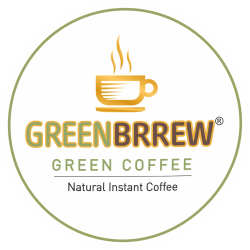If you’ve ever taken a shot of espresso or had an instant coffee jolt, you’re familiar with coffee. But what is robusta coffee, anyway? We’re going to take a deep dive into this under-celebrated staple of the coffee world, looking at its origins, characteristics, and why it’s here to stay. Whether you’re a coffee lover or just curious, an appreciation for robusta can help foster a newfound respect for your daily brew. With brands such as Greenbrrew, it becomes easier to navigate through robusta with innovative products that emphasize its distinctive profile.
Origins and History of Robusta Coffee
Robusta is derived from the Coffea canephora plant that is commonly found in tropical forests of Sub-Saharan Africa. Its lineage spans hundreds of thousands of years; it is a creature that has sprung into existence out of the humid depths of the understory. Its genus name, "robusta," is indicative not only of the plant's hardiness but also of its resistance to infestation from pests and diseases, not to mention harsh weather.
Today, robusta is grown primarily in regions like Vietnam, Brazil, and Indonesia, producing around 30-40% of the world’s coffee crop. It is strong, growing well at lower altitudes, down to sea level and up to around 2,600 feet—a reliable crop for farmers in tough climates.
Characteristics of Robusta Coffee Beans
What does robusta coffee look and taste like? The beans are generally rounder and smaller than Arabica beans, with a straight crease running down the middle. They are known for their strong, robust flavor profile that many say is bitter, nutty, or woody—explanations have even included references to dark chocolate. Lower in acidity and higher in bitterness, robusta boasts a full-bodied experience that’s less fruity than other types.
One of the things that sets it apart is its caffeine content, as robusta has significantly more caffeine than arabica and is used when you need an extra pep in your step. It has lower levels of sugar and fat, which is why it sticks to the tongue with a rich, earthy flavor.
Robusta vs. Arabica: Key Differences
When you compare robusta with arabica, the other major species of coffee, the distinctions become all the more apparent. Arabica thrives in higher elevations and provides a smoother, more acidic taste with a hint of fruit; robusta is stronger and possesses a richer kick. To cultivate robusta requires less effort, and thus it costs less, so that is why you see it in blends or instant versions.
Uses and Benefits of Robusta Coffee
Robusta excels in espresso blends where it enhances crema and body, or when ground to make instant coffee, because of its resistance to high temperatures and innate strength. From a health perspective, its high caffeine levels can help with focus and metabolism, and it’s rich in antioxidants. Green coffee is one such product of the robusta that brands like Greenbrrew use to bring out other essential compounds that are not destroyed by roasting or grinding and have properties for weight management and detoxification.
Furthermore, the hardiness of robusta aids sustainable agriculture in areas that are deeply affected by climate variations and makes for a more environmentally friendly option for conscientious consumers.
How to Enjoy Robusta Coffee?
Ready to try robusta? Begin with a straightforward black coffee to experience its full bracing; mix it with milk for a creamy latte. For a healthy alternative, consider instant green coffee sachets from Greenbrrew which uses robusta beans to add antioxidants without roasting them off. Consider experimenting with brewing in a French press or an espresso machine to coax out alternate notes.
Why Robusta Is Actually Getting Respect Now?
(“Fine Robusta” movement)
Starting around 2018, the Coffee Quality Institute (CQI) established an official Fine Robusta Protocol using a point system similar to Arabica. Today there is specialty robusta coffee earning 85+ points—which would have been unheard of a decade earlier.
Examples of acclaimed fine robustas:
- India Kaapi Royale (washed robusta) – chocolate, caramel, low bitterness
- Vietnam Dak Lak wet-polished robusta – clean, dark cocoa notes
- Uganda Rwenzori robusta—surprisingly fruity and winey
These are typically sold for prices higher than most commercial Arabicas.
Summary
In conclusion, what is robusta coffee? A hardy, flavorful species of the Coffea canephora plant, it brings a sturdy texture and full-bodied flavors to your daily cup—from the caffeinated punch that comes with dark roast coffee to each and every flavor note in hot or cold recipes. From its origins in Africa to the latest of Greenbrrew robusta has been fueling coffee drinkers all around. So the next time you’re thinking about grabbing a cup, consider robusta for that jumpstart—after all, it’s more than just coffee; it’s a robust experience to relish.
FAQ's
Q1. What is special about robusta coffee?
Ans. Robusta is also more caffeinated than Arabica, with a heavy bitter taste and thicker crema, as well as a heartier yield in harsh conditions. It’s cheaper and more potent and the fuel for many espresso blends and instant coffees.
Q2. What is the difference between arabica and robusta coffees?
Ans. Arabica: sweeter, fruity, acidic, smooth, premium price. Robusta: bitter, earthy, higher caffeine, harsher, cheaper, disease-resistant.
Q3. Is Starbucks coffee Arabica or Robusta?
Ans. Starbucks makes its main drinks from 100% Arabica beans, although some instant (VIA) and certain espresso blends in Europe/Asia do contain Robusta for added kick and crema.


